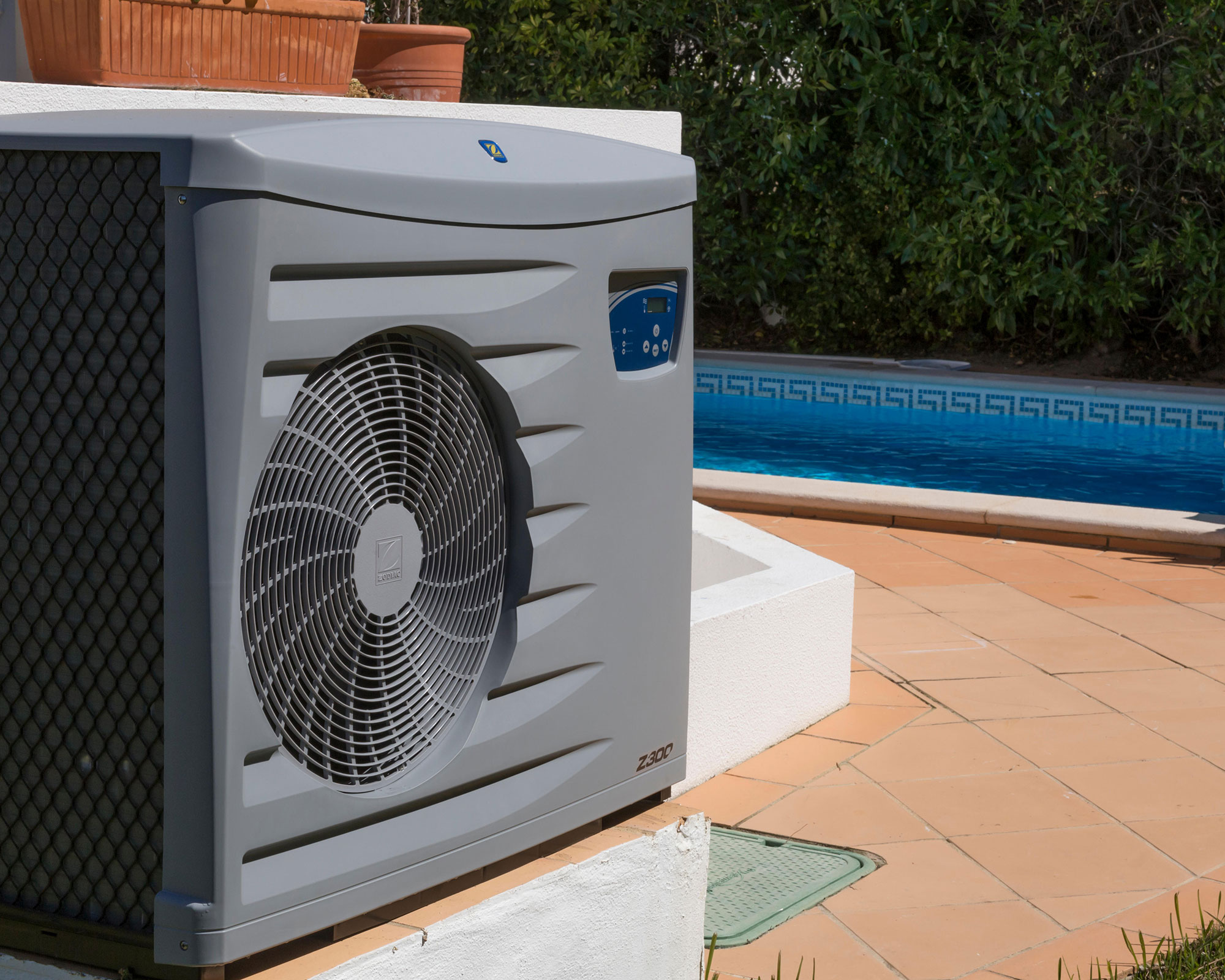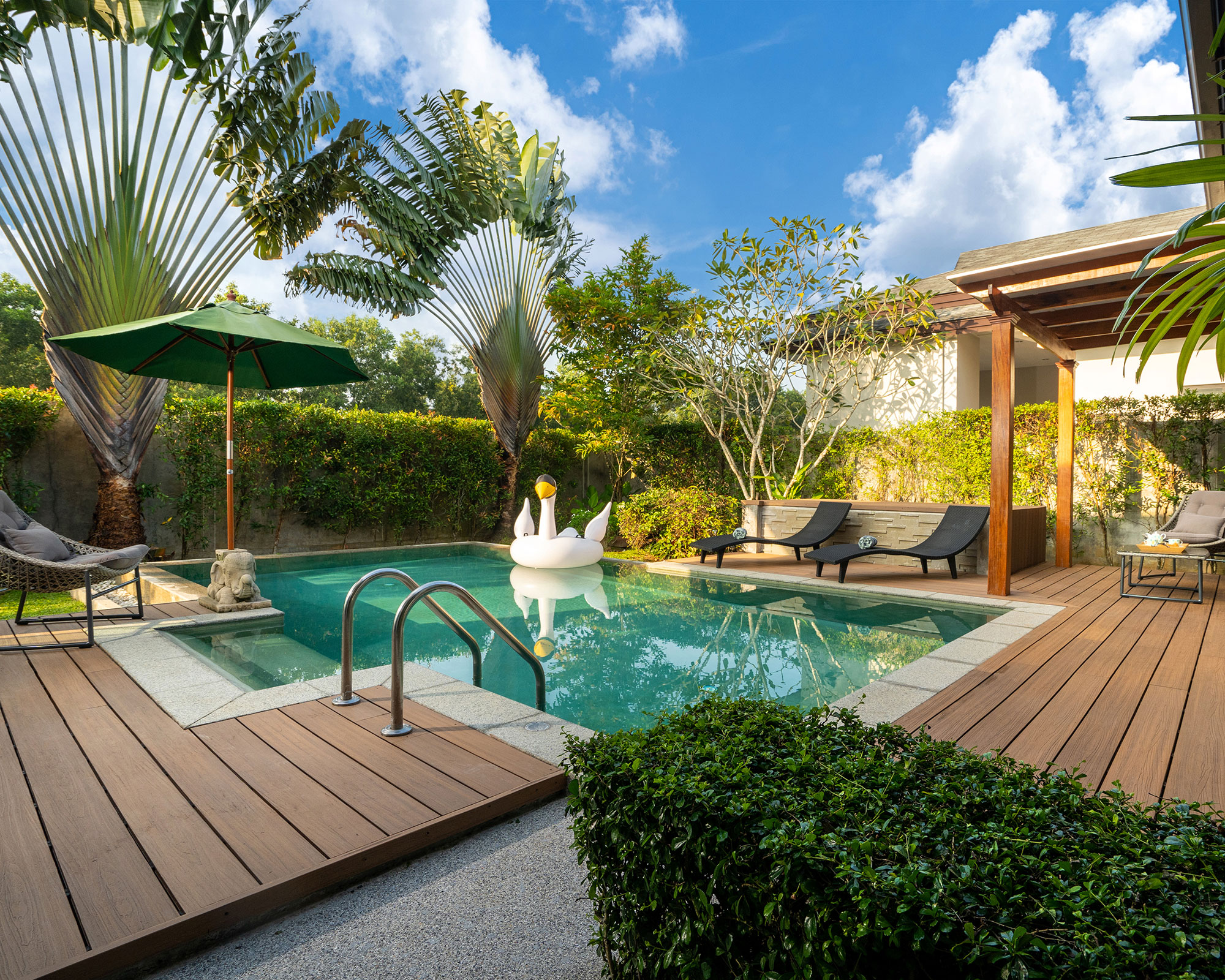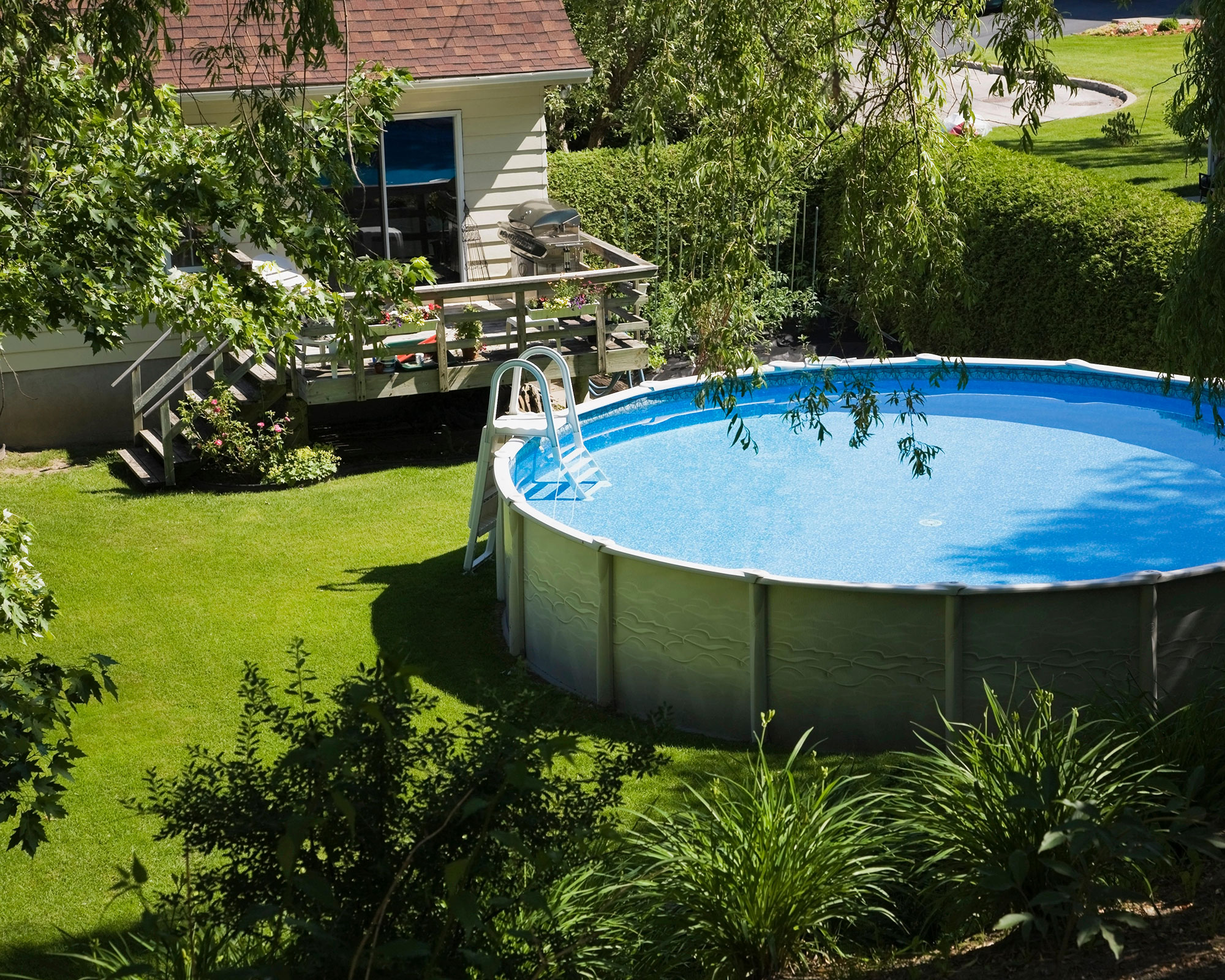How to heat a pool: ways to warm up your pool this swimming season
We explain the different ways for how to heat a pool – from heat pumps to solar collectors plus more


Learning how to heat a pool is crucial if you want to get the most out of yours this season. Even in hotter regions, swimming is much more pleasant if there's a little warmth in the water, and there are lots of ways to create it.
So, if you're planning new pool ideas for your backyard, then you'll need to do a bit of research on the best methods for heating. Luckily, we're here to help by rounding up some of the most popular methods and explaining the differences.
Learn how to heat a pool and enjoy a relaxing swim no matter the weather
Extend your swimming season by learning how to heat a pool – our guide will help you find the right approach to factor into your pool design.
1. Use renewable energy with a heat pump
Heat pumps are both efficient and low carbon, so are a good choice if you're looking for a sustainable option for heating your swimming pool. There are heat pumps that can warm entire homes, but there are also systems made specifically for pools, which are more affordable.
There are two types of heat pumps: air source and ground source. 'Some heat pumps provide heating directly to the pool water, whilst indirect units utilize a heat exchanger,' explains SPATA (The Swimming Pool & Allied Trade Association). 'The indirect units have the ability to heat other things (like changing room radiators) as part of a multi-zone system, but because they would need to run at higher temperatures, they would be less efficient than a purpose-built swimming pool heat pump.'
So, how do they work? Well, these types of heaters extract most of the heat they provide from outside air (or the ground). SPATA explains how heat pumps are a popular choice for outdoor pools, since the operational months coincide with the warmest weather.
They do require electricity to run. But generally, during an outdoor pool heating season, they will provide 3.5 to 4.5 times more heat to the water than the power they consume in electrical input. Heat pumps for winter operation can still provide warmth in temperatures as low as 5ºF (-15ºC), but are less efficient.
Air source heat pumps need to be installed somewhere where there is plenty of ventilation, with noise consideration in mind. And another thing to consider is that 'the initial warm-up times are likely to be slower than other forms of heating being considered (warm-up periods of less than five days are generally unlikely),' as says SPATA.
Cost-wise, according to Swim University, expect to pay between $500 to $1,500 (approximately £368–£1,103) for air source heat pump installation, while running costs will be around $100–$200 (roughly £74–£147) monthly. Ground source pumps tend to cost more to install as excavation work is involved.
This method can be used if you're wondering how to heat a greenhouse, too.

2. Opt for a reliable boiler
Boilers are a common and quicker way to heat a pool, providing an initial one-to-two-day heat-up time. 'They are available as either a purpose-built "direct" type, where swimming pool water passes directly through the boiler, or an "indirect" type, where a conventional boiler is linked to an additional external heat exchanger,' explains SPATA.
'The part of the heating equipment in contact with the pool water must be specifically designed to be compatible with the chemicals contained within swimming pool water and the required flow rates,' they continue.
SPATA explains how mains gas boilers have the lowest running costs in comparison to oil and liquid petroleum gas (LPG) ones. If using LPG, remember you will need space for the tank – however, larger tanks can be installed underground.
They all need a flue and should be installed by a qualified professional, generally in a plant room. In some cases, it's also possible to use your home boiler to provide heating via a swimming pool heater exchanger, SPATA adds.
Swim University says they can cost between $500 to $1,500 (£368–£1,103) to install, with running costs of around $200–$400 (£147–£294) a month.
As an alternative, you can use a biomass boiler. This is an environmentally-friendly approach that uses renewable energy – usually in the form of wood pellets made from forestry waste or by-products. In fact, you can even use a biomass boiler to heat your entire house – an increasingly popular approach as more people become more conscious of climate change. However, they are more expensive to install than traditional boilers.
Looking for more sustainable garden ideas? Our guide has plenty to get you inspired.

3. Utilize the sun with solar collectors
Energy-efficient and eco-friendly, making use of the sun is a great way to heat your pool if you live somewhere warm.
The water is circulated through solar collectors, where it heats up and is then pumped back into the pool. Some designs include automatic valves to direct the water through the collectors only when needed.
They require a large surface area (around 50–100% of the surface area of your pool). And, they should ideally be south-facing. According to Energy.gov, they cost between $2,500 and $4,000 to install.
Naturally, with this approach, you get what the sun gives you. This is why many homeowners also install a backup heater for cloudy days.
Don't forget, it's not just heat that solar energy can provide – why not consider lighting options too? Our guide to the best solar lights has lots of brilliant picks.

4. Try direct resistance electric heating
'Electric resistance heaters are compact devices that are always installed within a plant room,' says SPATA. With these designs, water flows over the heating element before circulating back into your pool, elevating the overall temperature.
They can be relatively cheap to install. However, the running cost tends to be the highest – around $500 per month according to GPS Pools. 'Due to the relatively high cost of electricity, they would normally be operated on supply tariffs that offer block periods of lower cost electricity,' says SPATA.
Low-maintenance and silent to operate, they are a good option if you're after a quick way to get your pool ready for intermittent swimming, without relying on outdoor temperatures or sunlight.
'With the high electrical demand from this type of heating, it is essential that an electrical survey is undertaken to ensure that there is sufficient capacity available,' SPATA adds.

How to heat an above-ground pool
Generally cheaper and quicker to install, above-ground pools can be wonderful additions to the backyard for all the family to enjoy.
When it comes to heating them, the methods are pretty much the same: solar, electric, boilers, or pumps. As these types of pools are generally smaller, bear in mind that you won't need as much energy to create a comfortable swimming temperature. For that reason, many people opt for solar-powered approaches to keep costs down, particularly if they only plan to use their pool over the summer.
Adding a solar heat cover to your pool – whether in-ground or above-ground – is also an important step that will help reduce evaporation and heat loss, especially overnight.

How do you heat an indoor pool?
Indoor pools can be heated by all the options above, although, according to SPATA, solar heating is uncommon.
The choice of heating system will normally take into account the need to heat the air and possibly the domestic hot water, they say. 'Heating of the swimming pool air will help reduce moisture evaporation from the swimming pool and provide a comfortable atmosphere for occupants of the room.'
To avoid excessive humidity, 'swimming pool room heating should be complemented with a form of moisture control, such as a dehumidification system, or a combined heating and dehumidification air handling system,' they add.
'The heated, dehumidified air can only be efficiently distributed around a pool hall by forced air draft, either through a ductwork system or simply by "blasting" the air into the room and recovering it from the same point.'
If you're not too sure about an indoor pool but like the idea of somewhere sheltered nearby, our pool house ideas have lots of inspirational options.

The garden was always a big part of Holly's life growing up, as was the surrounding New Forest where she lived. Her appreciation for the great outdoors has only grown since then. She's been an allotment keeper, a professional gardener, and a botanical illustrator – plants are her passion.
